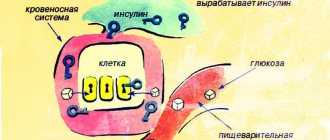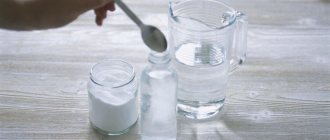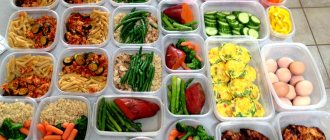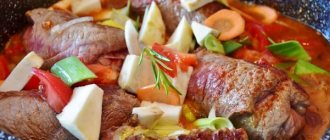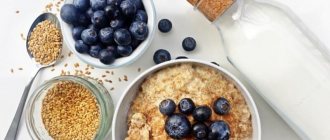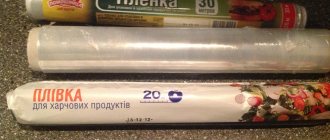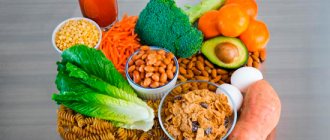In the hustle and bustle of everyday work, we often forget about snacks, which can play a cruel joke on our figure. Competently keeping a food diary will help you monitor the quantity, quality and calorie content of your diet. This way you can adjust your weight. In addition, in the process of losing weight, a food diary will become an indispensable assistant.
When a person cannot lose weight, but has replaced high-calorie foods with low-calorie foods, he often blames poor metabolism. It is not right. Once you start writing down everything you ate, how much physical activity you had during the day, it becomes clear what you are doing wrong.
How to determine why you are gaining weight?
Let's find out what reasons lead to the gain of excess kilograms in your case.
After all, only after determining the source of excess weight can you begin to choose a method of losing weight (adjusting your diet, balanced diet, necessary physical activity, etc.).
If you don't identify the source of excess weight, after any diet or month of gym training, you will return to your comfortable lifestyle. And the kilograms that you worked so hard on will come back to you again, taking with you a couple more extra friends.
In order to determine why you are gaining weight, it is enough to perform 3 sequential steps:
1. Be patient 2. Make observations and record them in a food diary (aka food diary) 3. Analyze the information received
Now let's look at each point in detail.
Be patient
This point is very important in any business. Your success depends on its implementation.
Most of the time, people fail to achieve their weight loss goals. They begin to lose weight, lose 3-5 kg, rejoice at the first result and relax. Then they gain weight again. At the first difficulties they give up and everything returns to normal.
Our task is to act wisely and not be like everyone else. Therefore, even before you start losing weight, you need to patiently analyze your actions, find mistakes and correct them.
Those who lack patience go looking for “magic pills and miracle cures,” buy them at three times, and shift all responsibility for their lives onto them.
Make observations and record them in your food diary
For the first time, a food diary will replace your nutritionist; you will look at your nutrition from the outside and perhaps immediately find your mistakes.
In any case, it is the food diary that will open your eyes to the source of your extra pounds. Teaches discipline and self-analysis.
Analyze the information received
After you fill out the food diary template, move on to the next step - analyzing the information.
After all, proper nutrition is too comprehensive a concept. For one, this means not eating after 6 pm, for another, not eating at McDonald's and KFS, for a third, not eating foods containing flour/sugar/salt, etc.
Write about more than just food
Many people who are losing weight keep a diary and enter information in it exclusively about the foods they eat. But this approach is not correct. Of course, information about what was eaten and in what quantities helps to understand the reasons that interfere with weight loss.
But often people start pampering themselves with tasty foods in order to get rid of negative emotions. Therefore, experts recommend recording in a diary information about the mood in which the person started the meal, and what mood he was in when he finished it. Such notes help to understand the purpose for which the food was consumed. This allows you to see whether a person is prone to stress eating.
Watch the video about keeping a food diary for weight loss:
https://youtu.be/2SIFxc_3cLs
https://youtu.be/TlPhk-h8cZY
How does a food diary benefit you when losing/gaining weight?
A food diary template is like a debit/credit for an accountant, your income and expenses.
In it you enter all the food that your body received throughout the day, and expenses are not what you thought about, but any physical activity (hiking, training).
You act as your accountant and keep records. Only instead of accounting transactions you will have the names of products, and instead of monetary amounts - the amount of KBJU (calories, proteins, fats and carbohydrates).
How to keep a food diary correctly?
Now we have reached the most practical section - how to keep a food diary effectively. I will tell you how my clients keep a food diary, give a link to a food diary template in excel format and tell you how you can improve it.
If you have never kept a food diary, at first you may find this a little strange and time-consuming process, but I will tell you how to do it easier and not spend a lot of time and effort on keeping a diary.
The main thing is to understand that now you want to analyze your current situation. There is no need to change your usual diet the next day.
You need a real picture. Therefore, eat as usual, as you have been doing lately, without changing anything.
STEP #1 - Decide why you need a food diary
First, write why you need to keep a food diary and fill out information about yourself:
1. Indicate your goal (losing weight, gaining muscle mass, controlling your diet or quality of nutrition). Provide a specific, measurable goal. For example, lose 6 kg in 2 months. In addition, write down why you need to lose weight.
2. Write down your parameters (current weight, it is advisable to weigh yourself in the morning on an empty stomach, chest volume, hip volume, waist circumference). To more accurately track the results, you can write the volumes of problem areas: volume under the breasts, volume 10 cm above the navel, volume of the widest part of the leg, volume of the lower leg, etc.).
3. Add a general full-length photo and photos of problem areas to your diary to see your progress in losing weight or gaining muscle mass.
STEP #2 - Preparation
1. It is advisable that you have a kitchen scale. Of course, you can do without them, but the data will no longer be as accurate.
If you don't have scales and don't want to buy them, it doesn't matter. Every major supermarket has scales. If you are going to make a salad or prepare a second course, check weigh the purchased products.
Divide foods into smaller bags. For example, portions of nuts purchased by weight can be hung directly in the store. If you eat 10 nuts a day, simply weigh 10 nuts on a scale and write them down in a notebook or remember them.
You can also do this with other foods, such as baked goods.
We buy many products in packages or cans. When you put a product on a plate, read the number of grams on the package and determine approximately how much you put on your plate.
2. You will need a simple notepad with a pen or notes in your phone. Always keep them with you. Immediately after or during meals, make notes indicating the exact number of grams or milliliters.
3. .
STEP #3 - Start keeping a food diary correctly
Download the food diary excel template and fill out the diary template using these rules:
1. After each meal during the day, write down a list of all the foods you ate in notes on your phone or in a notepad.
Write down: When? Note your meal times (breakfast, lunch, dinner and all snacks). What? Names of dishes and products. How many? In grams and milliliters.
Important! Write complete information about the product, this is very important when calculating the calorie content of the diet (for example, sour cream 20% fat - 100 g, kefir 3.2% fat - 200 g) or a finished dish (for example, cabbage soup - 200 g, with pork - 50 g and olive mayonnaise 67% fat - 2 teaspoons). Record all “small snacks” (for example, how much coffee, tea, drinks you drank, how many candies, sandwiches, fruits you ate).
In the evening, it is difficult to remember everything that was eaten during the day, and if the calories in your food diary differ from the actual ones, then you will be greatly misled about your diet and diet.
Example of a food diary
Breakfast 6 am. 1 glass of water Cutlet 100 grams Cottage cheese 50 grams Sour cream 30 grams Jam 1 tablespoon Tea with lemon without sugar 250 ml
Lunch 14:10 Glass of kvass 250 ml Two chicken wings 150 grams Two corn 350 grams Two cucumbers 300 grams Tomato 100 grams
Snack 16:20 Yogurt 3.2% 300 ml Bun 150 grams
Dinner 19:30 Boiled chicken breast 300 grams Two sandwiches with butter and red fish Bread 100 grams Butter 15 grams Red fish 60 grams Banana 100 grams
Before bed 23:00 Kefir 3.2% 500 ml Dark chocolate 30 grams
2. Keep such a food diary for 7 days (from Monday to Sunday, or from Wednesday to Tuesday, it’s not particularly important). Include physical activity in it, for example, a walk in the park at an average pace for 30 minutes, or strength exercises for 1 hour + 20 minutes of cardio.
3. Take time to analyze your calories. Enter all data into a food diary excel template for 7 days.
4. Use the food calculator to analyze your menu for 7 days.
Product Analyzer Recipe Analyzer
Simple, copy data from your table to the analyzer in 1 day.
Transfer the data obtained in the KBJU analyzer (calories, proteins, fats, carbohydrates) to your food diary template.
In the same way, enter the data for the second day and so on in order for all 7 days.
To find out how many calories, proteins, fats and carbohydrates you need, read the article: “How to start losing weight at home.”
As a result, you will get a complete analysis of your nutrition for 7 days by calories, proteins, fats and carbohydrates.
Android applications[edit | edit code]
List of the most popular applications:
- My weight loss coach
- Collection of diets
- Lose weight without dieting
Read the main article:
Calorie counter
My weight loss coach[edit | edit code]
Emblem of the application “My weight loss coach”
Main characteristics:
- Personal Reminders
- Tips to stay resilient: Just click on the picture of the obstacle. Motivating tips with inspiring photos will appear on the screen.
- Tasks: set tasks for yourself and monitor their implementation
- Incentives: Earn points and receive virtual rewards for your achievements.
Additional data:
- User rating using a 5-point system: 4,3
- Number of installations: 1,000,000–5,000,000
- Developer
Application interface example:
Collection of diets[edit | edit code]
Emblem of the Diet Collection application
Main characteristics:
- More than 1000 diets - from the classics (Kremlin, Japanese or kefir diets) to the new (activated carbon or ginger tea diet);
- all diets are divided into categories;
- diets for various diseases.
Additional data:
- User rating using a 5-point system: 4,4
- Number of installations: 100,000 – 500,000
- Developer
Application interface example:
Lose weight without diet[edit | edit code]
Emblem of the application “Lose weight without dieting”
Main characteristics:
- choosing a weight loss program;
- 150 useful tips for losing weight;
- database of 51,000 dishes, available offline;
- 83 types of training;
- Reminders for meals, workouts and the need to drink water.
Additional data:
- User rating using a 5-point system: 4,6
- Number of installations: 1,000,000–5,000,000
- Developer
Application interface example:
What mistakes should you avoid when keeping a diary?
Mistake #1. You start keeping a diary, fill it out for 1-2 days and quit. Remember, you don't have to keep a food diary for the rest of your life. In order to get a real picture of your nutrition, it is enough to obtain data for 7 - 14 days.
Mistake #2. If you miss recording one meal, you become frustrated and stop recording the rest of your meals throughout the day. Even if you missed one entry, nothing bad happened. Remember what you ate, write it down at least approximately and continue to keep your diary.
Mistake #3. One of the main mistakes. Cooked and raw foods have different nutritional values. When entering data into the “Product Analyzer”, select the composition of the prepared products. For example, oatmeal with milk, not oatmeal. If you pre-weighed the product before cooking, then choose oatmeal + milk.
Food diary - pdf book “The path to an ideal figure”
A food diary template in the form of a book “The Path to an Ideal Figure” will become your main assistant in calculating calories and losing weight.
Buy a book from a nutritionist-nutritionist
“Food Diary: The Path to an Ideal Figure!” for 999 rubles 299 rubles.
Buy a book for 299 rubles:
*To buy the book, click the "Submit" button. The book will be sent to you by email, which you indicate when paying.
What nutritionists advise
No nutritionist will advise you to suddenly and permanently change your lifestyle. An experienced specialist will try to draw the attention of his client to the following factors already outlined earlier:
- It is not rational to build a diet plan for the entire period that was determined for weight loss. It’s easier to start with separate small time periods (from 3 days to 2 weeks);
- try to find time to do physical exercise (morning workout, visiting the fitness center, and so on);
- Don't forget about your food diary. Try to do it every day. This will require patience, but such work will pay off in full. There is no doubt about this.
Experts believe that a food diary is useful: it helps you see your weaknesses, analyze your eating habits, and adjust your diet. If you keep such a diary correctly, you can lose weight faster and more easily say goodbye to bad habits like snacking or overeating.
